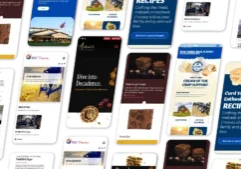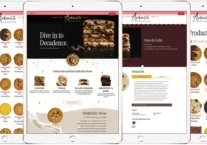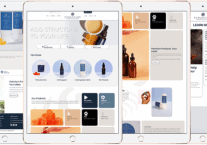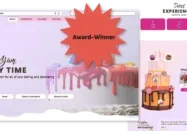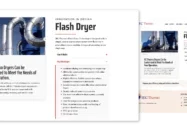Sins of Genericide: Death of Women and Brands
Branding isn't about a pretty logo, swirly typography, pastels, pinks, flowers, birds, "empowering" women, or how much you love coffee. Apparently, everyone's doing it, which is reason enough for why you shouldn't. Branding is about the needs of your clients, having a unique, consistent, and compelling story that separates you from the crowd of competition.
When Pretty Isn’t Attractive
Branding isn’t about a pretty logo, swirly typography, pastels, pinks, flowers, birds, “empowering” women, or how much you love coffee. Apparently, everyone’s doing it, which is reason enough for why you shouldn’t. Branding is about the needs of your clients, having a unique, consistent, and compelling story that separates you from the crowd of competition.
You could be at risk!
Following trends–some, and in moderation, are okay to adopt if you are on the leading edge of it. As soon as the masses jump on board, you need to bail. After all, how is your potential client going to remember to call you if you blend in with the others? Yep, those pretty visual you had designed are all about you and what you like. You just happen to like some trends, more than one, and put them all together. What is your client’s perception of you? Here’s the thing, even if you are bucking the trends for your visuals and other messaging, are you living up to expectations you are setting for yourself and your business?
“You can have a carefully calculated brand strategy…a multi-million dollar marketing campaign… delivering a consistent message….But it’s all meaningless if the actual experiences you deliver don’t align with your brand’s messages.” —The Financial Brand “Your brand isn’t what you say it is. It’s what they say it is.” —Marty Neumeier, “The Brand Gap”
When Popularity Kills
You already know what this is even if you don’t recognize this word. (It’s also not the first time I’ve written about it on this blog.) Brands that get destroyed by their own success commit genericide. For example, you know brands like Kleenex and Band-Aid. We don’t ask for the product, a facial tissue, anymore; we say, “I need a Kleenex.” Kleenex is the brand, but it doesn’t have a monopoly. Other brands were and have jump in that market. Its own successful campaigns that garnered significant market share, reduced the brand name Kleenex to a generic item. Band-Aid faced the same problem in the 1990s and added “Band-Aid brand” to their message content to educate consumers that while there are other bands out there they are THE reliable brand for adhesive bandages. These brands had to distinguish themselves once again. Because of their massive scale and popularity, that was an expensive and long battle. Here’s the thing, we collectively do the same to ourselves. My interpretation of genericide focuses on the collective–our industries, niches, markets, etc. Some of us start trends. Most of us merely adopt trends. A few of us don’t start or adopt trends. I’m not revealing any big secrets by telling you that trends are short-lived. It takes even less time these days for a trend to become “dated’, which means it’s very easy to recognize a period in time in which that “thing” was created.
“Please stop empowering me!” — Nian Hu, Reporter
No longer are you empowering women when you say “empowering women.” The context in which Nian is approaching this topic is a bit different. However, it’s an excellent example of how we are genericizing the messaging. We are grabbing onto the buzz-word of the day, and hoping that launches us into hero-mode and consequently galactic success. Every woman everywhere who’s starting or running a business that focuses on women is empowering women. We are so empowered we’re blowing a fuse! Let me be more specific.
Two Shades of Blush and Bashful
“Besties,” Ann and Beth, decide to pool their talents and skills to create a big event about women and for women. They want to give women the tools they need to be success in business and in the home while not assuming traditional “female” roles. Oh, that sounds great, doesn’t it! They talk about the “what”–what tools they share to knock down corporate walls and ceilings and be assertive and get things done (like a man, ya know (insert sarcasm here)) in their careers and businesses, and the tools for being a proper wife, mom, friend without doing everything, including cleaning the kitchen sink. Then, they start working on the story to brand the event–the true purpose and ultimate emotional connection, or in another buzzy phrase, ”identifying their why.” “We want to empower women! Yes, that’s it! That sums it up perfectly,” they shout in unison. “Oh, yes. I was at an event about this and loved it.” That’s the end of the conversation on the matter and off they go to make it happen. And, that is the moment of ultimate sin. Why? It’s a buzz-word, a trend. We’re all being bombarded with not just this exact message but these exact words. At this point the only difference lies between Pantone 225 and Pantone 226 (two shades of pink). But, what does pink mean in our society?
“Red is sexy and passionate, while light pinks are demure… eliciting… gentleness.” — Tina Sutton and Bride M Whelan, The Complete Color Harmony, Pantone Edition: Expert Color Information for Professional Color Results Front Cover
The two characteristics identified in this one summarized sentence aren’t the characteristics of every woman or even what women want to communicate when it comes to their businesses with the exception of nurses and massage therapists.
My Swirly, Girly, Coffee Rant
I realize I may start a war about how insignificant your love of coffee is, especially given that, apparently, I am the only one not drinking, not loving it, and not posting all about it on my website and social media. Truly, your all-consuming love of coffee may indeed be the center of your universe (all your family members know and know how to delicately approach if you’ve not your dose by X o’clock). Okay, I probably just started it.
The Grind
The point of this diatribe isn’t that I hate coffee; it’s that it’s redundant. It’s redundant in our own industry. It’s redundant from business to business, creative to creative, woman to woman. We all just…blend. So many designers, photographers and related businesses, particularly woman-owned and run, gush over their love of coffee on their website’s about page, Instagram, Twitter, Facebook, email series/newsletter, and every online and printed marketing material they can find. Hey, you’ll likely widen your target market rather than niche. (Say yes to everyone so you don’t have to say no, right?) Even if the coffee industry is your market, can we find some other way to incorporate or discuss it? Everyone who drinks coffee isn’t your ideal client, even for those in the coffee industry. Dig deeper please! My point is this evolution of tribalism has us adopting trends and holding onto them long after the life-support has been disconnected. We are part of a generation that seems to desire success while sabotaging it all for fear of abandoning or being abandoned by our tribe. So, we blend in with the trend and complain about how much success we’re not having.
The Infection
As a designer, I follow, listen to, discuss creative and business issues within groups, podcasts, videos, etc. In the groups with mixed professions, there’s inevitably a call for a web designer or branding pro. I’ve spent my fair share of time in the larger groups looking up everyone who “raised their hands”.
- What are they doing?
- How are they branding their businesses?
- Is that really the message they seem to desire to convey?
Last week, it happened in a 99% female creative online group. This particular call-for-designers got a significant response. I took the opportunity to see a larger sampling of what is happening in my industry among my peers. I visited and read more than 75 websites, including the about pages and portfolios. Sadly, only 2 or 3 designers stood out. Sure, there was plenty of talent, but I saw more fear…and more and more of the same from site to site. The swirly, girlies had infected 97% of my beloved creatives. Good for those 2 or 3 bold, confident designers! How sad for the other 97%! Even sadder is that looking through the profiles of the poster, she’ll likely choose one of the 97% and go only as far as they have. Thrown into a pile with other designers, all those individually pretty designs start to run together. They become forgetful. Even as I rant here, I have these words circling the dog track of my mind:
“Your ego is not your amigo…. Venting is the ego’s way of avoiding self-reflection.” — Cy Wakeman, Reality-Based Leadership
Therefore, I must make it clear. Before you start a caravan to my house to protest how cruel and inhuman I am for these words and going against the coffee-lovers of the world, know that I’m also talking to the “me” of 5, 10, 15, and 20 years ago. I created my own victimhood and welcomed anyone who wanted to visit at a modest price. My self-reflection took way too long and at a way too high a price.
We live in “the best of times and the worst of times”.
Thanks to technology and the internet, it’s never been easier to start a business! That’s the good news…and the bad. Low barrier to entry but oversaturated markets…with oversaturated trends. Here is a short checklist to help you stand out with your rebrand.
- Pay more attention to your ideal clients than your competition. Be selective!
- If it’s a trend, avoid it, or use it differently. (See previous post, Industry Genericide.)
- Use classic, timeless typography.
- Use a color palette that illicit the emotions that support your brand from your ideal client and ignore trends.
- Make sure the typography and color facilitate readability.
- Save trends for marketing campaigns, which are short-lived compared to branding.
- Develop and know your brand foundations
- Originality
- Sincerity
- Understanding
- Boldness
- Consistency
- Visibility
- Value
- Live and breathe your brand promise.
- When all else fails, see #1.
More About Branding
- The Branding Process
- Who cares what your logo looks like! Brand reputation matters.
- Is it time to rebrand?
“People who believe they can succeed see opportunities where others see threats.” ― Marshall Goldsmith, What Got You Here Won’t Get You There: How Successful People Become Even More Successful

